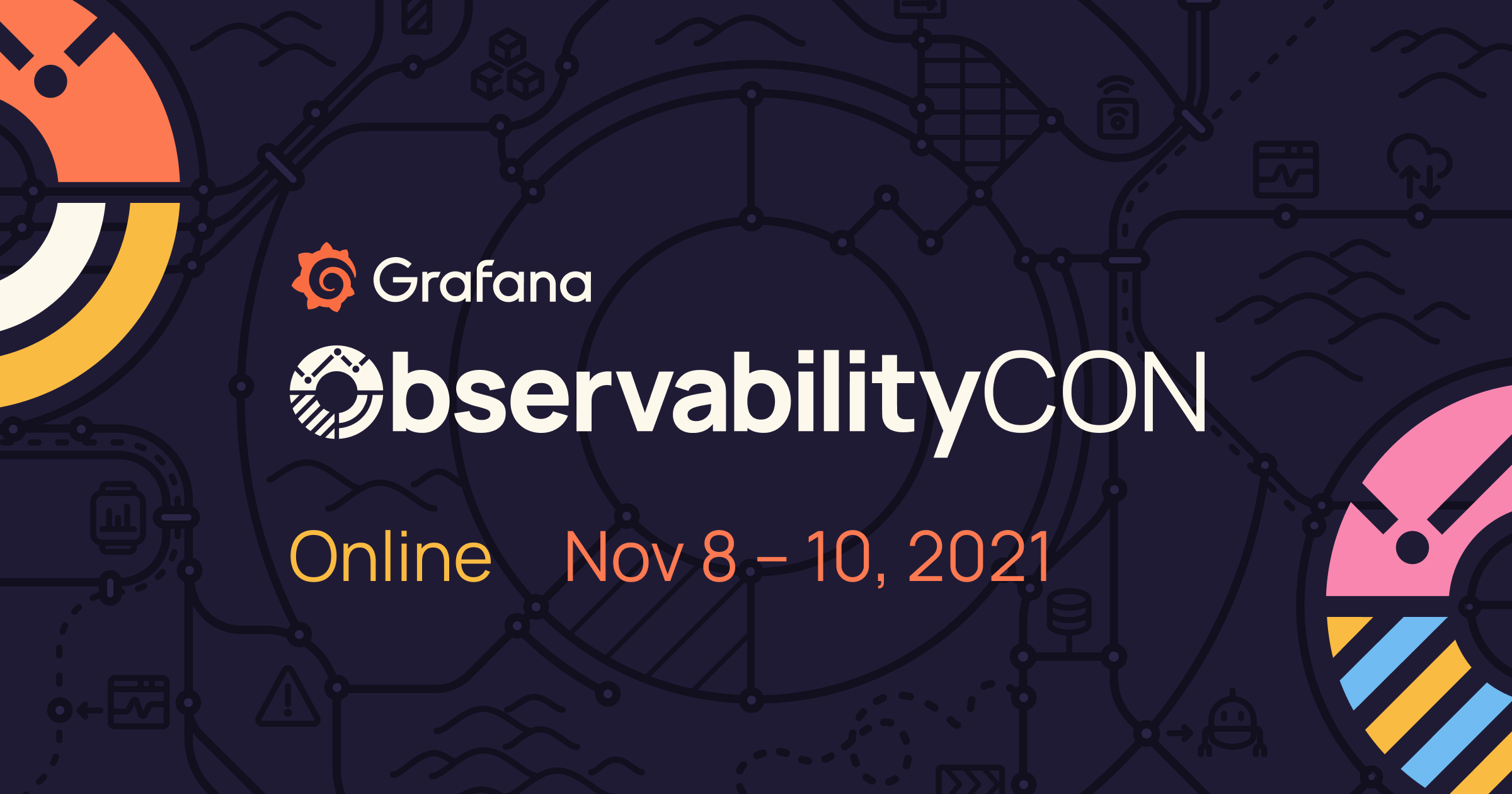
The ObservabilityCON 2021 agenda is live!
WIth just over a month until we kick off ObservabilityCON 2021, we’re excited to announce the preliminary agenda for the three-day virtual event. This year’s conference will take place Nov. 8-10 and include 20 sessions featuring presenters from around the world.
You won’t want to miss talks on observability-driven development, bridging Prometheus with legacy monitoring, IoT SecOps, plus the latest features and news from Grafana, Prometheus, Loki, and Tempo.

We hope you’re as excited as we are! Without further ado, here’s a preview of what you can expect.
From the Grafana Labs team
Keynote: Observability is your journey
At the official kickoff of ObservabilityCON2021, we’ll look back at the past year, share observability success stories from the community, and make some exciting announcements.
Unite your end-to-end observability workflow beneath Grafana’s first pane of glass
In this talk, we’ll discuss recent developments integrating Prometheus-style alerting and Alertmanager into Grafana, and share ideas about how those signals/alerts/incidents can be managed to achieve an efficient incident management workflow.
Workshops and training
For this year’s ObservabilityCON, we are offering hands-on intermediate Prometheus training and workshops on Prometheus and Loki. These seats fill up quickly, so be sure to sign up soon!
From the community
Observability-driven development at JPMorgan Chase
Developers are creatives, not factory workers. In this talk, Vinodh Ravi, Executive Director, Platform Engineering at JPMorgan Chase will demonstrate how we can run experiments on a distributed system instrumented with OpenTelemetry by using k6 to simulate load, Gremlin to run chaos scenarios, and then leverage the native data correlation capabilities of Loki and Tempo to automatically gather insights from the experiment. These observations will be provided back to the team for further analysis, thus creating a feedback loop that will effectively shift resiliency testing left. The result? Reduced time to detection by combining the data with feedback and collaboration.
Building performance tests into your CI pipeline with k6 and Grafana
Performance testing is an essential part of building fast and reliable web services. Vonage QA Architect Matthew Churcher will discuss how to run performance tests on every commit using the load testing tool k6, Grafana, and GitHub actions. This talk shows testing can quickly and easily be added to your software build pipelines without breaking the bank or tying up all your engineers.
IoT spy: Security metrics for smart devices with Telegraf, InfluxDB, and Grafana
Internet of Things (IoT) devices are ubiquitous, appearing in homes, offices, and public spaces. However, these devices often lack security features due to their fast time to market and insufficient resources for security testing. Network Automation Engineer Xenia Mountrouidou will present a set of novel security metrics based on generic IoT characteristics that relate to security features, and the architecture to collect, visualize, correlate, and alert on them with a Telegraf, InfluxDB, Grafana (TIG) stack. The goal of this architecture is to make IoT security transparent and measurable. The project, which has a testbed of home assistants, web cameras, smart lights and plugs, and phones, provides insight into how IoT devices are acting while we’re not using them.
Learning the tricks of Grafana Loki for distributed logging at scale in a Kubernetes environment
Collecting and understanding logs is a complex operation.
Logging can provide immense detail when used well, or it can become a firehose and take hours to trawl through. The team supporting the Kubernetes platform at Civo needed a solution that was simple and performant and could be queried in ways to help and not hinder them.
In this talk, Civo SRE Anaïs Urlichs and Principal Engineer Alex Jones will illustrate how Loki was chosen and brought into the organization to empower engineers. Integrating with Prometheus and Grafana dashboards, Loki has allowed engineers to filter for precise information that helps them debug quicker. The distributed nature of the tooling enabled the team to scale components to meet demand and configure it for Civo’s specific cluster topology.
See you at ObservabilityCON!
Check out the full ObservabilityCON 2021 schedule! And if you haven’t already, register now for free.



